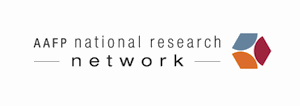
This simple strategy may save time and increase awareness of care guidelines.
Fam Pract Manag. 2012;19(5):21-24
Elizabeth Stewart is director of evaluation for the American Academy of Family Physicians National Research Network (NRN) in Leawood, Kan. Douglas Fernald is a senior instructor and Elizabeth Staton is an instructor in the Department of Family Medicine, University of Colorado School of Medicine, in Aurora, Colo. This research was conducted by the University of Colorado-Denver under contract to the Agency for Healthcare Research and Quality (contract No. HHSA290 2007 10008, task order #4), Rockville, Md. The authors of this article are responsible for its content. No statement may be construed as the official position of the Agency for Healthcare Research and Quality of the U.S. Department of Health and Human Services. Author disclosure: no relevant financial affiliations disclosed.
Seeing “spider bite” on the schedule used to mean a quick visit – and a moment of relief to the busy family physician running behind schedule. Take a look, rule out infection, recommend over-the-counter treatments, and move on to the next patient. Today, however, “spider bite” often signals something much more complicated: a case of community-associated methicillin-resistant Staphylococcus aureus (CA-MRSA).
CA-MRSA cases peaked in 2005, resulting in almost 19,000 patient deaths – many of them in young, otherwise healthy adults.1 Rates of CA-MRSA have dropped since then, but family physicians remain critically important in the rapid diagnosis and treatment of this highly communicable condition.
To assist physicians, the Centers for Disease Control and Prevention (CDC) developed a clinical algorithm for outpatient management of skin and soft issue infections in the era of CA-MRSA. For nonpurulent lesions, the algorithm recommends antibiotics that cover Streptococcus spp or other suspected pathogens, close follow-up, and in certain cases antibiotics that cover CA-MRSA. For purulent lesions, the algorithm recommends incision and drainage (I&D), culture of the purulent material, and in certain cases use of systemic antibiotics. The algorithm reflects research demonstrating that the routine use of antibiotics after an abscess is completely drained does not result in improved patient outcomes.2 It encourages appropriate antibiotic prescribing and consistent inclusion of I&D and cultures, procedures that take time and preparation.
“Getting everything together to treat an abscess surgically takes some time if you're not prepared,” says Brian Webster, MD, of Wilmington Health in Wilmington, N.C. “Admittedly, it can be easier and faster to write a prescription than to follow these CDC guidelines to the letter. The key to using the guidelines is to think ahead.”
RESOURCES
Physician materials: http://www.cdc.gov/mrsa/community/clinicians/index.html
Patient materials: http://www.cdc.gov/mrsa/community/posters/index.html
A simple intervention
To test the idea that planning ahead would increase compliance with the CDC guidelines, the State Networks of Colorado Ambulatory Practices and Partners (SNOCAP-USA, a collaboration between the American Academy of Family Physicians National Research Network and the University of Colorado-Denver) worked with network physicians in 16 primary care practices to create “toolkits” to treat skin and soft tissue infections. Physician focus groups had suggested the toolkits include the following:
The CDC algorithm (available as posters, pocket cards, and handouts),
All surgical materials needed for I&D and packing of the wound, if desired.
Many of the physicians in the study assembled the toolkits as easily transportable trays stored in accessible locations such as the medication room or supply closet.
TOOLKIT TIPS
Ask a clinical team member to assemble a “CA-MRSA-ready” toolkit, including the CDC algorithm, patient handouts, and surgical materials.
Decide what surgical equipment should be included and where the toolkit will be kept.
Depending on the makeup of your team, assign the task of stocking and preparing the toolkit to one team member or make it a rotating task.
Consider other uses for “toolkit trays” –e.g., joint aspiration, burn treatment, and wound care.
SNOCAP-USA analyzed case reports from the participating clinicians and found that they performed I&Ds or referred patients for that procedure in 65 percent of all reported skin and soft tissue infection cases. No pre-intervention rate was determined; however, in a larger, related evaluation, researchers found no significant improvement in the I&D procedure rate between the pre-intervention period and the intervention period.3 The evaluation found an increase in the overall antibiotic prescribing rate for skin and soft tissue infections (from 35 percent to 45 percent).3 For purulent infections, physicians using the toolkits were 2.183 times more likely to prescribe an antibiotic and 2.624 times more likely to prescribe an antibiotic that covered CA-MRSA.3 These data suggest that while the toolkits did not accomplish universal compliance with the CDC guidelines, appropriate antibiotic use did increase.
In addition, participants noted that they saved time and reduced hassles. “Once you take the five or 10 minutes up front to create the tray, and then make it someone's responsibility to keep the tray stocked and accessible, it's amazing how easy it is to treat an abscess surgically rather than defaulting to writing a prescription,” said Webster, a SNOCAP-USA participant. “Getting all the equipment together at the point of care is such a huge hurdle. You have to overcome the other hurdle, which is making time to do it in advance. Then, when the patient comes in, no one is left spinning their wheels. It's all right there.”
The toolkits may also help facilitate candid conversations with patients about the use of antibiotics. “Talking to patients about appropriate use of antibiotics takes time,” said Patty Fitzgibbons, MD, of Kansas University Family Medicine Residency in Kansas City, Kan., who adopted the toolkit approach. “My hope is that using this toolkit will gain me that time for those critical conversations.”
IMPROVING PRACTICE THROUGH RESEARCH

This article is part of a series from the American Academy of Family Physicians National Research Network and its affiliates, a national collaboration of primary care practice-based research networks. This series is designed to help family physicians put research results to use in their practices.
